 W
WThe Royal Logistic Corps (RLC) provides logistic support functions to the British Army. It is the largest Corps in the Army.
 W
WThe Royal Logistic Corps (RLC) provides logistic support functions to the British Army. It is the largest Corps in the Army.
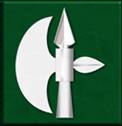 W
W102 Logistic Brigade is a logistic brigade of the British Army. Its role is to force generate and force prepare fighting elements, including the Headquarters, globally, for current operations and deliver capability to contingent forces as directed by 1st UK Division in order to support the delivery of operational success.
 W
W395 Air Despatch Troop of the Royal Logistic Corps is the only Army Reserve Air Dispatch Troop in the British Army. It functions in tandem with the tactical support aircraft of the Royal Air Force. It consists of seven air despatch crews who are responsible for the receipt of vital stores and combat supplies, their packaging for air drop, their loading and their despatch during flight. It is based at RAF Brize Norton in Oxfordshire.
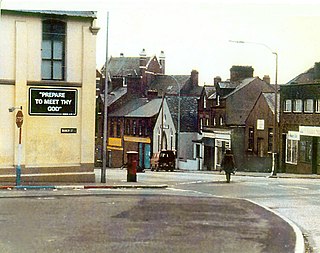 W
WAn ammunition technical officer (ATO) is an officer involved in all aspects of the army's use of ammunition. This includes: bomb disposal, clearance of ERW, explosives accident investigation, procurement, in service management, storage, and inspection and repair.
An ammunition technician (AT) is a British Army soldier, formerly of the Royal Army Ordnance Corps but since 1993 of the Royal Logistic Corps, trained to inspect, repair, test, store, and modify all ammunition, guided missiles, and explosives used by the British Army. These technicians are also trained to use demolition to safely dispose of individual items of ammunition and explosives (EODs) or to conduct logistics disposal of bulk stocks of multi items. After gaining sufficient experience, those who show the appropriate qualities are given extra training to render safe improvised explosive devices (IEDs) by a process called improvised explosive device disposal. Experienced ATs may be called to give evidence as expert witnesses in criminal or coroner's courts in relation to ammunition or explosives or to EOD and IEDD duties.
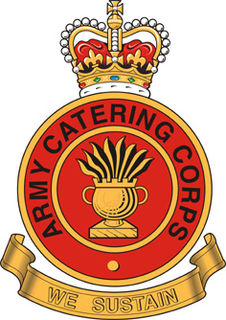 W
WThe Army Catering Corps (ACC) was a corps of the British Army, responsible for the feeding of all Army units. It was formed in 1941 and amalgamated into the Royal Logistic Corps in 1993.
 W
WThe Bicester Military Railway (BMR) is a railway in Oxfordshire, England belonging to the Ministry of Defence. It links military depots at Piddington, Arncott and Graven Hill with the Oxford to Bicester Line.
 W
WThe British Forces Post Office (BFPO) provides a postal service to HM Forces, separate from that provided by Royal Mail in the United Kingdom. BFPO addresses are used for the delivery of mail in the UK and around the world. BFPO moved from its original base at Inglis Barracks, Mill Hill to its current base at RAF Northolt in northwest London in 2007.
 W
WOn 20 March 1994, a British Army Lynx helicopter was shot down by the Provisional Irish Republican Army (IRA) in Northern Ireland. A unit of the IRA's South Armagh Brigade fired an improvised mortar at the British Army base in Crossmaglen, County Armagh. The mortar round hit and shot down the helicopter, serial number ZD275, while it was hovering over the helipad. Three British soldiers and a Royal Ulster Constabulary (RUC) member were wounded.
 W
WConductor (Cdr) is an appointment held by a few selected warrant officers class 1 in the Royal Logistic Corps and is one of the most senior appointments that can be held by a warrant officer in the British Army. Previously conductor was the most senior warrant officer appointment, but it was outranked with the creation of the Army Sergeant Major appointment in 2015 following Army reforms. The appointment was also reintroduced into the Royal Australian Army Ordnance Corps for selected warrant officers class 1 in 2005.
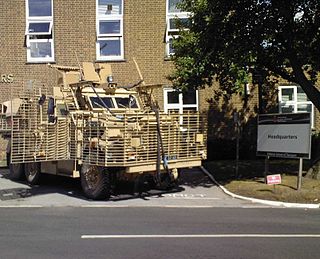 W
WThe Defence School of Transport (DST) is located at Normandy Barracks, Leconfield near Beverley, East Riding of Yorkshire in England.
 W
WThe postal service of the British Army is today provided by the British Forces Post Office but its origins may be traced back to Saxon times.
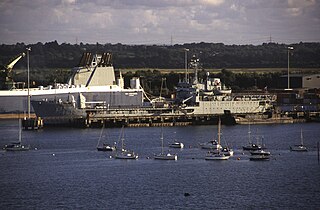 W
WMarchwood Military Port (MMP) or Marchwood Sea Mounting Centre (SMC) is a military port located in Marchwood, Southampton on the south coast of the UK, and the base of 17 Port & Maritime Regiment Royal Logistic Corps. The port was built in 1943 to aid in the D-Day assault on Normandy in 1944 and has since been used to support the Falklands War.
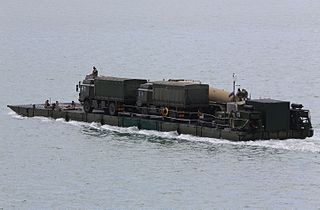 W
WThe Mexeflote is a landing raft used by the British Royal Logistic Corps and the Royal Australian Navy to move goods and vehicles between ship and shore. It was first used by British military in the 1960s. It was used during the Falklands conflict, and has been used in humanitarian aid missions. The system is very similar to the Rhino ferry.
 W
WThe Museum of Army Transport was a museum of British Army vehicles in Beverley, East Riding of Yorkshire, England.
 W
WThe Princess Royal Barracks, Deepcut, commonly referred to as Deepcut Barracks, was the headquarters of the Royal Logistic Corps (RLC) of the British Army and the Defence College of Logistics, Policing and Administration. Located near Camberley, Surrey, England, it was the headquarters of the Royal Army Ordnance Corps until the formation of the RLC in 1993. At that time, it was known as Blackdown Barracks. The barracks remain home to the RLC Museum, the Band of the RLC, The Defence Logistics School and 25 Training Support Regiment RLC, which trains the officers and soldiers in a range of logistical skills.
 W
WThe ramped craft logistic (RCL) is a type of landing craft operated by 17 Port and Maritime Regiment RLC of the Royal Logistic Corps of the British Army. From the early 1980s onwards it was deployed to replace the RPL. One of their first roles was to provide logistical support during the setting up of the garrison in the Falkland Islands immediately after the Falklands War - this role was conducted by the two first of class, Arromanches and Antwerp. RCLs were originally procured for UK, Cyprus and Hong Kong, and are now only stationed at the military port at Marchwood, near Southampton, after the two based at the British base at Akrotiri, Cyprus were sold in 2014. They are slowly being withdrawn from service, as of 2015.
 W
WThe Royal Army Clothing Depot was a factory and warehouse providing uniforms and other items of clothing for the British Army. It was located in Grosvenor Road, Pimlico, London, England. Established in the 1850s, it remained in operation until 1932; for much of its history the depot was part of the Royal Army Ordnance Corps and its precursors. During the early part of the First World War it was headed by Colonel Harold Stephen Langhorne.
 W
WThe Royal Army Ordnance Corps (RAOC) was a corps of the British Army. At its renaming as a Royal Corps in 1918 it was both a supply and repair corps. In the supply area it had responsibility for weapons, armoured vehicles and other military equipment, ammunition and clothing and certain minor functions such as laundry, mobile baths and photography. The RAOC was also responsible for a major element of the repair of Army equipment. In 1942 the latter function was transferred to the Royal Electrical and Mechanical Engineers (REME) and the vehicle storage and spares responsibilities of the Royal Army Service Corps were in turn passed over to the RAOC. The RAOC retained repair responsibilities for ammunition, clothing and certain ranges of general stores. In 1964 the McLeod Reorganisation of Army Logistics resulted in the RAOC absorbing petroleum, rations and accommodation stores functions from the Royal Army Service Corps as well as the Army Fire Service, barrack services, sponsorship of NAAFI (EFI) and the management of staff clerks from the same Corps. On 5 April 1993, the RAOC was one of the corps that amalgamated to form The Royal Logistic Corps (RLC).
 W
WThe Royal Corps of Transport (RCT) was a British Army Corps established to manage all matters in relation to the transport of men and material for the Army and the wider Defence community. It was formed in 1965 and disbanded in 1993; its units and trades were amalgamated into the Royal Logistic Corps. The Depot and Training Regiment RCT was at Buller Barracks in Aldershot.
 W
WThe Royal Logistic Corps Museum is based at the Princess Royal Barracks near Camberley in Surrey. However, the Museum is currently closed and in the process of moving to a new museum in Worthy Down near Winchester, to open in April 2021. It combines the former collections of the Royal Corps of Transport, the Royal Army Ordnance Corps, Royal Pioneer Corps, Army Catering Corps and the Postal and Courier Section of the Royal Engineers.
 W
WThe Royal Waggon Train was the name originally given to the Supply and Transport branch of the British Armed Forces, which would eventually become the Royal Logistic Corps.